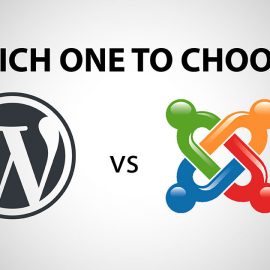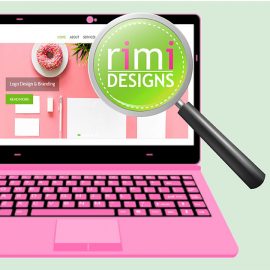
How to Use Circles in Website Design
Circles are a trend in web design. From the boxy days of web designing, our contemporary works have evolved beyond what many would have imagined in those early days of the web. The embrace of circles is most likely due to the fact that, in the early days it wasn’t easy to create circular elements without the use of images.
With the ease of using CSS to create circles, they are becoming much more commonplace in web design. They are cropping up all over the landscape.
Many feel that circles are more difficult to use in web design and there are arguments to be made there. However, if we stick to a good grid and maintain plenty of whitespace throughout, a circle-based design can put a fresh and exciting face on a website.
Now more than likely, using circles for all of the following on-site elements would result in a very confused and awkward website, given that circles tend to draw the user’s eye and make an element stand out. So we want to select the right element and place to include this circular patterning.
Below, we have dissected a few key areas that this tends to work well for a website.
Logo
Using a circular logo on your website not only gives it a clean and minimalist feel, but it also imparts the impression of sophistication and class.
The circle is one of the oldest symbols known to human kind, often representing life itself. This fact is probably part of the reason that so many designers use it to represent their brand and websites. So, using a circle has become quite a popular choice for logos these days.
Navigation
Using circles for navigation is becoming an increasingly popular and logical choice in today’s growing and evolving markets favouring mobility.
With the rise of touch screen devices, now moving beyond just smart phones and tablets, the push for patterning navigation in this way is taking way off. And with good reason. Using a circle for a button intuitively connects with the user, even mimicking the shape of a fingertip, begging the user to press it.
Icons
Circular icons are definitely the most popular and long running circular element used in web design. This is most likely due to the fact that they’re usually image based, so CSS capabilities didn’t have to play a role in their use. They were able to hit the ground running.
Some might think that given the length of time that circular icons have been decorating the web, it might be time to change gears a bit and move in a different direction. But there is a reason that this design aesthetic has lasted this long in regards to icons. It just works!
Image previews
This technique we tend to see a lot in portfolios around the web, as round images offer an aesthetically pleasing way of presenting a preview of the work to users. Again, this patterning tends to really draw the eye. So putting your previews in a cleverly cropped circle not only visually directs the user their way, but it speaks to them.
And as for usability, circular images give plenty of room to breath between them, which can give a website a creative and harmonious look.
Calls -to-action
Much like with navigation and the prevalence of touch-screen devices and expected capabilities, calls-to-action are served well by taking on this rounded pattern. Though, if you are presenting both the navigation and any CTAs, you may have on the website in similar fashion, then you should try to make them stand out in very different ways.
Navigation is necessary, yes, but CTAs are priority elements that we need to be sure get treated as such. And distinguished as such. Creating a visual hierarchy is nothing new to web designers, and this is simply an extension of that.
SOURCE: Webdesigner Depot
Need a professional looking website?



